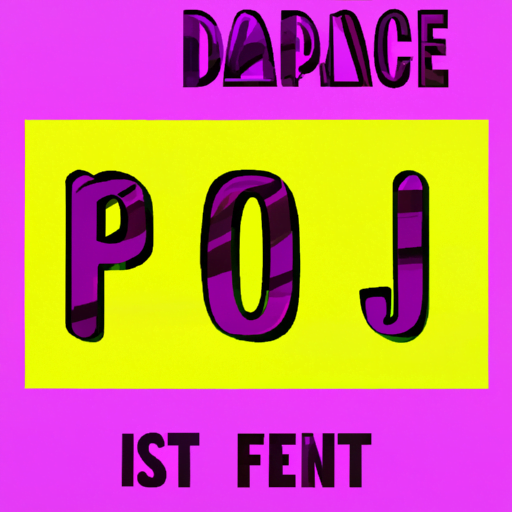
-
Table of Contents
- The Impact of Typography in Medical and Healthcare Design
- The Role of Typography in Medical and Healthcare Design
- The Impact of Typography on Readability and Comprehension
- Font Choice
- Font Size
- Font Style
- Case Studies: Typography in Medical and Healthcare Design
- Case Study 1: Mayo Clinic
- Case Study 2: Patient Information Leaflets
- Conclusion
The Impact of Typography in Medical and Healthcare Design

Typography plays a crucial role in the design of medical and healthcare materials. From patient information leaflets to prescription labels, the choice of fonts, sizes, and styles can significantly impact the effectiveness of communication and the overall user experience. In this article, we will explore the importance of typography in medical and healthcare design, its impact on readability and comprehension, and provide valuable insights on how to make informed typographic choices in this field.
The Role of Typography in Medical and Healthcare Design
Typography is not just about making text visually appealing; it is about enhancing communication and ensuring that information is easily accessible and understood. In the medical and healthcare field, where clear and accurate communication is critical, typography becomes even more important. Here are some key roles typography plays in medical and healthcare design:
- Readability: The primary purpose of typography is to make text readable. In medical and healthcare design, where information can be complex and technical, choosing the right font and size is crucial to ensure that patients, healthcare professionals, and other stakeholders can easily read and understand the content.
- Brand Identity: Typography also helps establish a brand identity for medical institutions, hospitals, and healthcare organizations. Consistent use of fonts across various materials creates a sense of familiarity and trust among patients and stakeholders.
- Emotional Impact: Typography can evoke emotions and create a certain atmosphere. In healthcare design, the choice of fonts can help convey empathy, professionalism, or urgency, depending on the intended message.
- Accessibility: Typography plays a crucial role in ensuring that healthcare materials are accessible to individuals with visual impairments or reading difficulties. Choosing fonts that are easy to read and providing appropriate contrast can make a significant difference in accessibility.
The Impact of Typography on Readability and Comprehension
Readability and comprehension are essential factors in medical and healthcare design. Patients, healthcare professionals, and other stakeholders need to quickly and accurately understand the information presented to them. Typography can greatly influence these factors. Let’s explore some key aspects:
Font Choice
The choice of font can significantly impact readability. In medical and healthcare design, it is important to choose fonts that are clear, legible, and easy to read. Sans-serif fonts, such as Arial or Helvetica, are often preferred for their simplicity and clean lines. These fonts are widely used in medical documents, patient information leaflets, and healthcare websites.
However, it is important to consider the target audience when selecting fonts. For example, older adults may have difficulty reading small fonts or fonts with low contrast. In such cases, using larger font sizes and fonts with higher contrast can improve readability.
Font Size
The size of the font is another crucial factor in readability. In medical and healthcare design, it is important to strike a balance between fitting enough information on a page and ensuring that the text remains legible. Font sizes between 10 and 12 points are generally recommended for body text, while headings and subheadings can be larger to provide visual hierarchy.
Additionally, font size should be adjusted based on the medium of communication. For example, if designing for digital platforms, such as mobile apps or websites, it is important to consider responsive design principles and ensure that the font size remains legible on different screen sizes.
Font Style
The style of the font can also impact readability and comprehension. In medical and healthcare design, it is generally recommended to use simple and straightforward fonts. Decorative or script fonts may be visually appealing but can be difficult to read, especially for individuals with visual impairments or reading difficulties.
However, font styles can be used strategically to convey certain messages or create a specific atmosphere. For example, a bold and modern font may be used for headlines to convey professionalism and trust, while a softer and more rounded font may be used for patient information materials to evoke a sense of empathy and care.
Case Studies: Typography in Medical and Healthcare Design
Let’s explore some real-world examples of how typography has been effectively used in medical and healthcare design:
Case Study 1: Mayo Clinic
The Mayo Clinic, a renowned medical institution, has a strong brand identity that is reflected in its typography choices. The clinic uses a combination of sans-serif fonts, such as Arial and Helvetica, for their website and printed materials. The fonts are clean, legible, and convey a sense of professionalism and trust. The consistent use of typography across various touchpoints helps establish a cohesive brand identity.
Case Study 2: Patient Information Leaflets
Patient information leaflets are an essential part of healthcare communication. The typography used in these leaflets can greatly impact patient comprehension. A study conducted by the National Health Service (NHS) in the UK found that using larger font sizes, clear headings, and bullet points significantly improved patient understanding of the information provided. The study also emphasized the importance of using plain language and avoiding jargon to enhance readability.
Conclusion
Typography plays a vital role in medical and healthcare design. It impacts readability, comprehension, brand identity, and accessibility. By carefully considering font choices, sizes, and styles, designers can create materials that effectively communicate information to patients, healthcare professionals, and other stakeholders. The use of typography in medical and healthcare design should prioritize readability, legibility, and accessibility to ensure that information is easily understood and accessible to all. By understanding the impact of typography and incorporating best practices, designers can create materials that enhance communication and improve the overall user experience in the medical and healthcare field.
